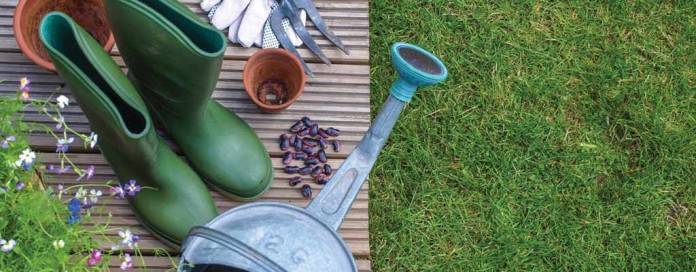There isn’t a limit to the number of ways that you can design your garden. Before you put your seeds and bulbs in the ground, consider companion planting as a guide for arranging your plants.
According to Penn State University Extension, companion planting is a strategy by which certain plants are placed near each other to produce benefits such as improved growth, flavor and can also provide pest control.
Sometimes on seed or bulb packets, there is a suggestion for pairing the plant with another vegetable or flower. Though there isn’t scientific proof about the pairing of certain plants, the following is a list of companion plants, adapted from Cornell University Cooperative Extension:
Asparagus
After asparagus is harvested, plant tomatoes on either side of the asparagus row. Asparagus and tomatoes mutually benefit one another. Another companion plant for asparagus is is parsley. The parsley provides vigor to the asparagus as well as to itself.
Beans
Three companion plants for beans are carrots, cauliflower and beets, while beans are beneficial to cucumbers and cabbage. When summer savory is planted near beans, bean beetles are repelled.
Plants in the onion family, such as chives, leeks, shallots and garlic, shouldn’t be planted near beans, and gladiolus shouldn’t be planted near beans, either.
Beets
Beets can be planted near onions, kohlrabi, lettuce, brassicas and bush beans, but shouldn’t be planted near pole beans.
Cole crops
Cole crops include cabbage, kale, kohlrabi, broccoli, Brussel sprouts, collards, rutabagas and turnips pair well with dill, celery, chamomile, sage, peppermint and/or rosemary. Don’t plant cole crops near strawberries, tomatoes or pole beans.
Carrots
Several plants work to repel carrot fly when planted near carrots, such as onions, leeks, rosemary, wormwood and sage.
Sweet corn
Corn’s leaves provide beneficial shade for melons, squash, pumpkins and cucumbers. Potatoes, beans and peas can also be planted near sweet corn.
Cucumbers
Cucumbers can be used for a range of garden problems. Raccoons tend to be repelled by cucumbers, so plant them near corn to keep raccoons away. Ants can be repelled by thin strips of cucumbers. To ward off cucumber beetles, sow a few radish seeds in cucumber hills.
Plant aromatic herbs away from cucumbers. Also, keep cucumber and potato plants away from each other.
Lettuce
Lettuce benefits from strawberries, cucumbers and carrots when they’re planted nearby. Plant radishes near lettuce for flavor benefits.
Onions
Onions can be planted with cabbage, beets, strawberries, tomatoes, summer savory and a small amount of chamomile. Ornamental onions work well for protecting roses.
Plant peas and beans away from onions.
To help control onion maggots, which travel from plant to plant, don’t plant your onions too close together.
Sweet peppers
Basil is a good companion for sweet peppers since they have similar general requirements.
Squash
Planting nasturtiums near squash will repel squash bugs.
Sow a few radish seeds in with squash seeds to help prevent insects. Or, plant squash earlier or later than usual will possibly keep the plants bug free.
Tomatoes
Tomatoes can be planted near chives, onions, parsley, marigold, nasturtium and carrots.
To repel red spider mites on tomatoes, plant garlic between the tomato plants. Tomatoes can be used to protect roses from blackspot.
Tomatoes and cole crops are not companion plants. Tomatoes don’t do well when planted near potatoes or fennel.
Plant combinations to avoid
There are also plants that shouldn’t be planted together because they interfere with the other plant’s growth. Cornell University Cooperative Extension provides a list of herbs that interfere with a number of crops commonly planted in gardens.
Trial and error
Keep in mind plant location as well as sunlight requirements when planning companion planting. Master Gardeners from Penn State University suggest trial and error with companion planting since there are thousands of potential combinations. Focus on a few of your biggest pest problems to start, and pay attention to the results so you know what will work in the future and what won’t.
What’s your take on companion planting? Let us know in the comments section.
One more companion planting post:
Ivory Harlow explains which herbs are great companions for certain plants. March 13, 2015











Some great ideas here! My sister is just making her first tries at companion planting and your post will be of a great help for her. I’m surely recommending your lovely ideas and advice to her. Thank you for sharing!